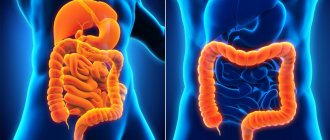Vitamin D Part I: Deficiencies, Insufficiencies, and Pandemic Dosages
In recent years, knowledge about the role of vitamin D in the human body has expanded enormously. Vitamin D is not a vitamin in the full sense of the word. This is a prohormone, the receptors for which are located in the tissues of the human body. In addition to the long-known antirachitic effect, vitamin D has been identified with many so-called extraosseous effects, which are currently being studied. This vitamin takes part in:
- work of the cardiovascular, endocrine, nervous systems,
- carbohydrate metabolism
- regulation of more than 200 genes
- protection against cancer
- immune response, including protection against respiratory infections.
Data from the largest meta-analysis suggest a positive role of vitamin D in the prevention of acute respiratory infections, especially in cases of initial deficiency. The relevance of taking vitamin D has taken on special meaning in light of the pandemic. Experts in the media have begun to talk more about the benefits of vitamin D, as vitamin D deficiency has been associated with more severe coronavirus infection and mortality. British scientists have identified a correlation between mortality rates and average vitamin D levels by analyzing data from 20 European countries. Correlation does not mean causation. An alternative version is that it is not vitamin D deficiency itself that provokes a more severe course of COVID-19, but the conditions that cause this deficiency. However, if we take into account that vitamin D deficiency to varying degrees is a phenomenon typical for Russia, its additional intake is justified during a pandemic. Many doctors are prescribing vitamin D in addition to their treatment regimen for COVID-19 infection. Often, buyers themselves ask for vitamin D supplements in order to fill the deficiency.
When, to whom and how much?
As a rule, the diet and lifestyle of most Russians do not provide adequate intake of vitamin D into the body. To determine the therapeutic dose of vitamin D, a blood test is performed for a vitamin D marker - 25-hydroxyvitamin (D (25(OH)D = calcidiol). The Russian Association of Endocrinologists accepts that a 25(OH)D level of less than 10 ng/ml indicates a severe deficiency vitamin D, less than 20 ng/ml is characterized as a deficiency. At levels of 20-30 ng/ml, they speak of vitamin D deficiency. A concentration of 30-100 ng/ml is considered an adequate level. A content of more than 100 ng/ml indicates an excess of the norm.
In case of deficiency or insufficiency, the doctor prescribes a treatment regimen, sets the dosage and duration of treatment. Usually, a total saturating dose is given first, and then switched to a maintenance dose. Children of all ages and adults are recommended to take prophylactic doses of vitamin D, which are prescribed without determining its level in the blood.
Daily doses for the prevention of vitamin D deficiency
For children
- 0-1 month: 500 IU
- 1 month: 1 year: 1000 IU
- 1-3 years: 1500 IU
- 3-18 years: 1000 IU
For adults
- 18-50 years: at least 600-800 IU
- 50 years and older: at least 800-1000 IU
- Pregnant and lactating: at least 800-1200 IU
Some instructions for vitamin D3 medications indicate maximum doses for pregnant and lactating women of no more than 600-1000 IU per day, due to possible teratogenicity. However, no cases of teratogenicity have been reported in humans. According to clinical guidelines, the minimum daily intake for these categories should be at least 800-1000 IU of vitamin D per day.
To maintain 25(OH)D levels above 30 ng/ml, you may need to take at least 1500-2000 IU of vitamin D per day. Recommendations are given for people who are not at risk for severe vitamin D deficiency. For such groups of people, consultation with a specialist is mandatory.
During the pandemic in Ireland, adults were recommended to take 800-1000 IU for prevention. British experts proposed an even higher dosage for the northern hemisphere - 4000 IU. 1000 IU (international units) of vitamin D equals 25 mcg (micrograms).
NB! Contraindications for all forms of vitamin D will be an increased concentration of calcium in the blood or urine, urolithiasis (oxalate stones), acute and chronic diseases of the liver and kidneys, renal failure and some others.
The pharmacy has a wide variety of offers for vitamin D, from which you can always choose the best option based on the form of release, dosage, manufacturer and individual preferences; we will publish a table on drugs and dietary supplements for vitamin D next week. Do not miss!
Interested in the article? You can find out even more in the section Working in a pharmacy
Types of vitamin D - D2 and D3
D3 (cholecalciferol) is called “solar” because it is formed in the skin due to exposure to ultraviolet radiation. To do this, children and adults should spend about 15–30 minutes in the sun several times a week. However, intensive production of vitamin D occurs during hours that are harmful to health - from 11:00 to 14:00, when the skin needs protection.
In addition, the natural absorption of the vitamin decreases over time, and people with dark skin absorb it more slowly. Negative factors for the perception of beneficial sunlight are sunscreens and unfavorable ecology, such as air pollution. Therefore, even in the summer months, not always and not everyone can stock up on cholecalciferol.
D2 (ergocalciferol) enters the body along with the usual food. However, not many foods of animal origin are known to be enriched with vitamin D: fatty fish (herring, sardines, salmon, mackerel, tuna, halibut), lamb, eggs (yolk), butter, cream, sour cream, hard cheese, beef liver , seafood, cod liver, red caviar, fish oil. The vitamin is present in limited quantities in plant foods: chanterelle mushrooms, oatmeal, potatoes, oranges, parsley, broccoli, nuts, vegetable oils.
It is important to follow the cooking rules so that the beneficial vitamin is not destroyed. It has also been proven that food cannot provide the body with a sufficient dose of D2, since this requires eating too many foods rich in it, some of which also contain cholesterol. In addition, this list contains things that are advised to be consumed with caution or are not allowed at all for pregnant women and in the first 6 months of lactation.
How to find out your vitamin D level?
You can get information about how saturated your body is with vitamin D by doing a blood test. Typically, this laboratory test is carried out if osteoporosis is suspected, during pregnancy, if the woman spends very little time in the sun, lives in the northern regions, has refused food of animal origin, has chronic diseases or hereditary disorders of the metabolism of this vitamin.
Vitamin D correction
Taking D3 is the prevention of diseases, treatment of pathologies of internal organs, a recipe for good health and longevity. However, its absorption directly depends on physical activity, for example, fitness classes, walking. Interestingly, swimming does not produce vitamin D, since water reduces body weight, relieving stress on it. Vitamin D can only be prescribed by a doctor: his recommendations must be strictly followed. The maximum dose for adult women, as well as pregnant and breastfeeding women, is 4,000 IU per day (100 mg). At the same time, women should pay attention to calcium, magnesium, vitamins A, C, E, B6, which improve the absorption of vitamin D, zinc, phosphorus, and calcium. That is why a vitamin complex is often prescribed for preventive purposes. A nursing young mother or postmenopausal woman can drink special complexes.
The combination of vitamins D2 and D3 has the most lasting effect. Vitamin D2 can accumulate in adipose tissue, forming a valuable reserve for the body. Vitamin D3 is used in metabolic processes faster, ensuring ongoing metabolism. One tablet of NUTRILITE Vitamin D combination product contains 15 mcg of vitamin D2+D3 from natural sources.
One of the popular dietary supplements is NUTRILITE™ calcium, magnesium, vitamin D, which contains the daily requirement of vitamin D. It is recommended to take 1 tablet 3 times a day with meals for a month. It is convenient to purchase and arrange delivery in Moscow or other cities of the country on the official Amway website. When taking such complexes or vitamin D on its own, you should avoid iron, which impairs its absorption. To achieve a more vivid effect and give the body everything it needs, you need to make changes to your diet. In addition, it should be remembered that the absorption of vitamin D is greatly harmed by drinking alcohol and smoking.
Sources of Vitamin D
Vitamin D was discovered about 100 years ago during the search for foods needed to combat deficiencies in calcium and phosphorus in bones and teeth. The benefits of taking fish oil, which contains large amounts of vitamin A, have been proven. However, when this vitamin was neutralized, fish oil retained its properties, which led researchers to the conclusion that it also contains other vital substances. Subsequently, the discovered vitamin received the name of the fourth letter of the Latin alphabet - D. But fish in sufficient quantities was not available everywhere, and organizing the industrial production of fish oil took time. Therefore, the research continued. It was soon discovered that the beneficial properties of certain types of food are enhanced by irradiation with ultraviolet rays. Further, it was possible to prove that vitamin D can be synthesized by living cells under the influence of sunlight.
The second wave of vitamin D research began in the 1980s. Nowadays, experts primarily name fatty fish and dairy products, as well as animal by-products as its food sources [1].
| Food | Vitamin D3 content, IU/100g |
| Cod liver | 5000–8000 |
| Herring | 294–1678 |
| Butter | 52 |
| Egg yolk | 20 ME in 1 piece. |
| Sour cream | 50 |
| Cheese | 44 |
| Beef liver | 15–45 |
If you are intolerant to the protein contained in cow's milk, dairy products made from goat's milk can be a source of vitamin D. They are especially indicated for women during pregnancy and breastfeeding [2]. Quiz: Find out how much vitamin D you get from food.
Children and the “sunshine” vitamin
The history of the discovery of vitamin D, which occurred about a century ago, was connected precisely with the search for a treatment for childhood rickets. It was found that this disease is a sign of calciferol deficiency. The level of this substance begins to affect the child in the womb, then during breastfeeding. Therefore, prevention of calciferol deficiency in pregnant and lactating mothers is so necessary. A deficiency can result in significant problems that are associated with the formation of the skeletal system and the baby’s susceptibility to diseases after birth, which often manifests itself after some time, including in adulthood. There is also a risk of having low birth weight babies. Prematurity, untimely cessation of breastfeeding, lack of sun, and poor nutrition deprive the baby of the necessary vitamin. But it is necessary not only to increase bone strength, growth, but also general development: vitamin D interacts with the level of cognitive potential and affects a child’s performance at school. Learn more about the symptoms of vitamin D deficiency in children.
Excess vitamin D for women
During pregnancy or with the onset of menopause, women begin to take vitamin complexes, synthesized D3 in the form of dietary supplements and medications. However, it is worth knowing that it is fat-soluble and is difficult to eliminate from the body. Due to prolonged overdose of more than 10,000 IU over many days, vitamin D easily reaches the point of toxicity. So its elevated level is also very dangerous. Hypersensitivity to this substance can also provoke an overabundance. Interestingly, the sun usually does not cause an oversaturation of the body with vitamin D.
There are two stages to the problem of hypervitaminosis. Initially, the consequences of intoxication include symptoms such as nausea, thirst, headaches, lack of appetite, weight loss, constipation or diarrhea, frequent urination, dehydration, weakness, fever, cramps, irritability, muscle and joint pain. Then calcium deposits occur in soft tissues, and atherosclerosis may develop. Severe cases include loss of consciousness and coma.
It is worth mentioning that an increased level of calciferol is fraught with infertility and the onset of early menopause, frequent colds, arrhythmia, hypertension, and liver enlargement.
Therefore, the dosage of the vitamin should be prescribed by a doctor after receiving the results of a blood test. In case of long-term use, regular testing is necessary.
Learn more about vitamin D deficiency
The consequences of this condition lead to serious problems - the development of various pathologies of organs and systems. Main problems:
- immunity suffers;
- there is a metabolic disorder;
- malfunctions may occur in the functioning of organs such as the thyroid, parathyroid, pancreas, adrenal glands, kidneys, lungs, heart, intestines, stomach, pituitary gland, hypothalamus, etc.;
- possible complications during pregnancy;
- menstrual irregularities may occur;
- changes begin in bone tissue, which leads to osteomalacia (leaching of minerals from the bones), and then to osteoporosis, which is fraught with fractures and injuries;
- deformation of posture, weakness and muscle pain occurs;
- problems with the ovaries and uterus (endometriosis, fibroids, etc.);
- a hormonal imbalance occurs: the production of testosterone and estrogen may increase, which leads to early menopause;
- the condition of the skin deteriorates (vitamin D is involved in the process of renewal of skin cells), hair, teeth (caries), manifestations of skin diseases may occur;
- excess weight gain occurs;
- there is a feeling of anxiety, insomnia, depression;
- chronic fatigue and headaches are felt;
- hypertension, diabetes, arthritis, multiple sclerosis may occur;
- ARVI and acute respiratory infections become frequent.
Test: Check if you are at risk of vitamin D deficiency.










